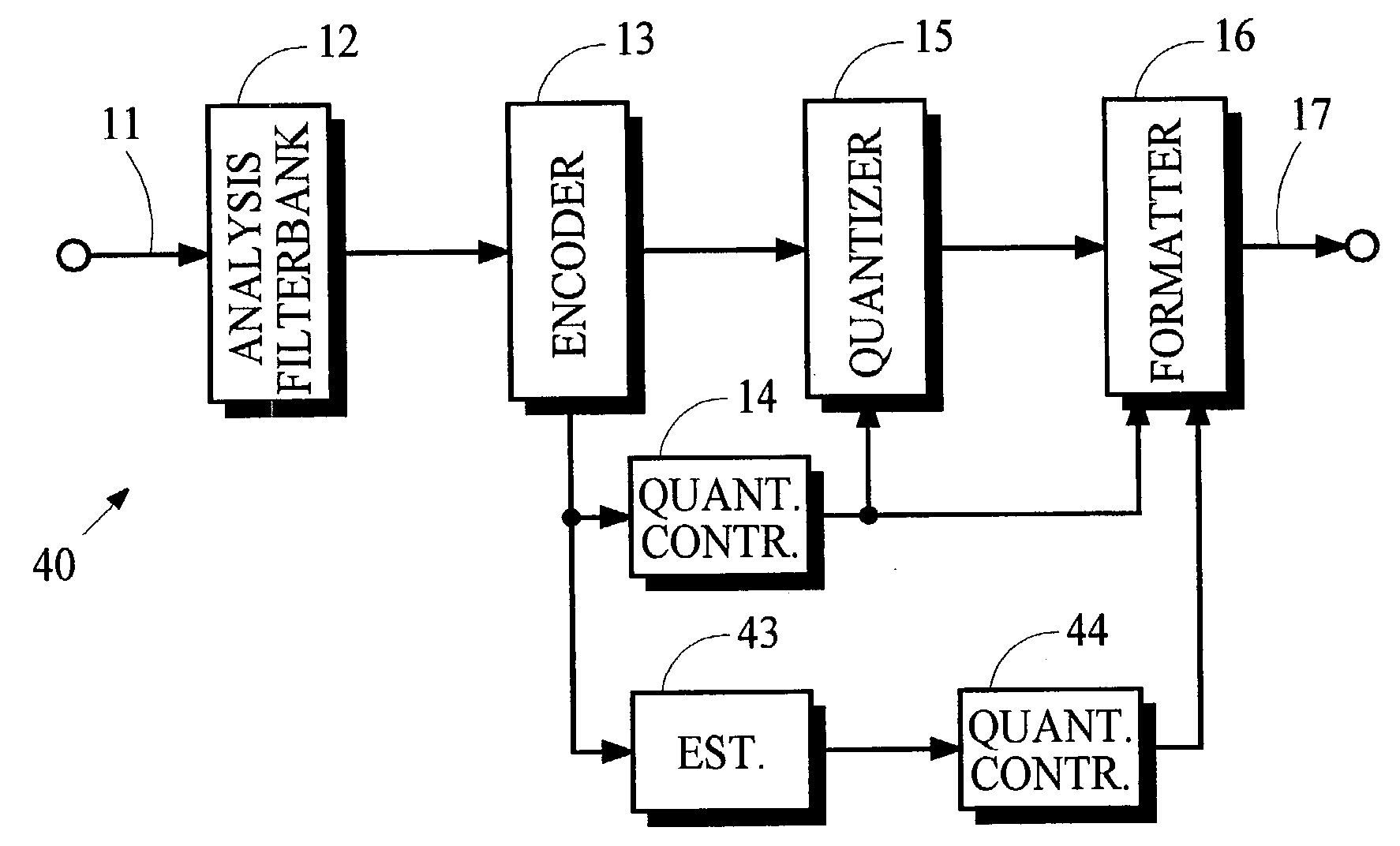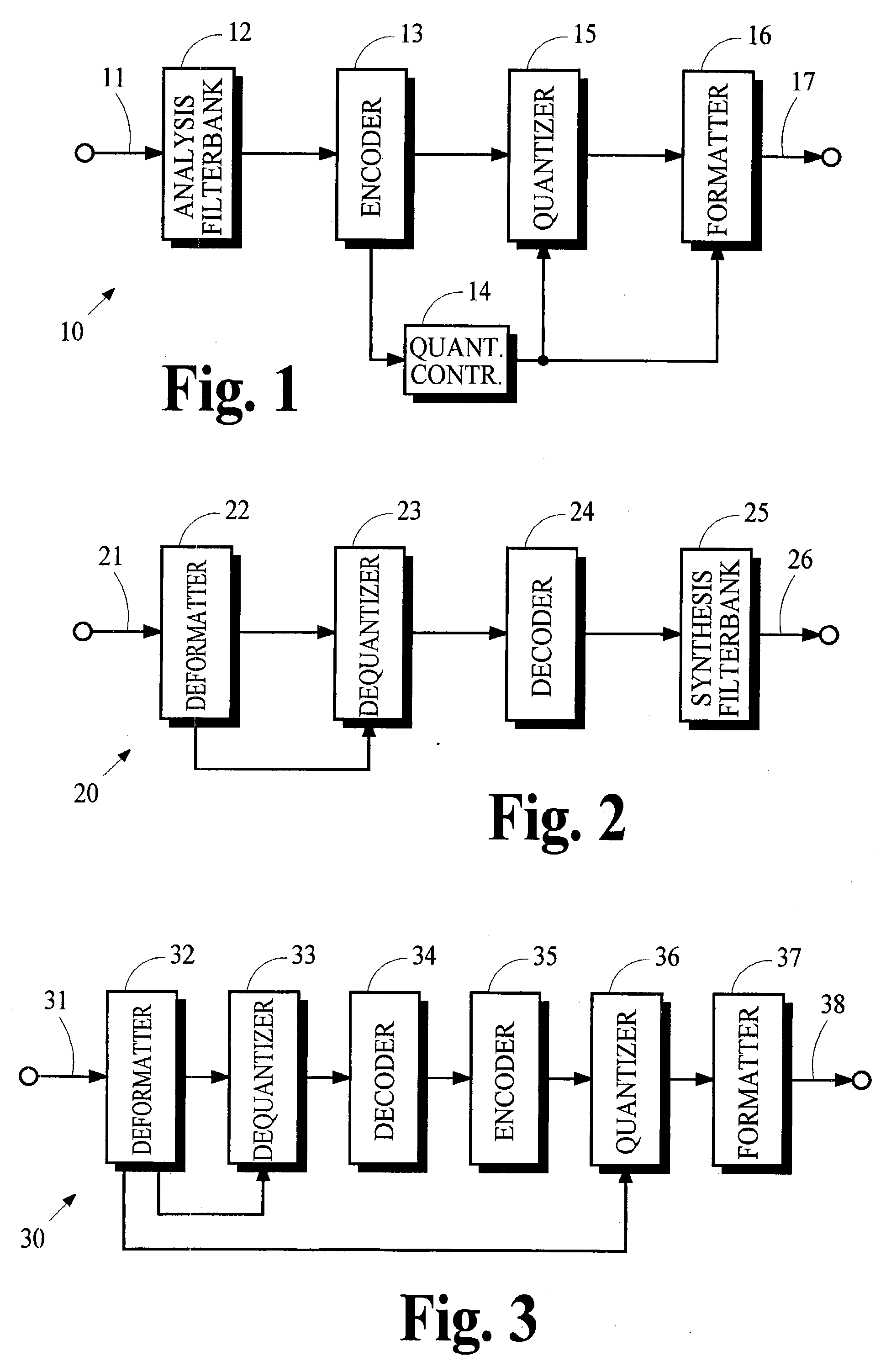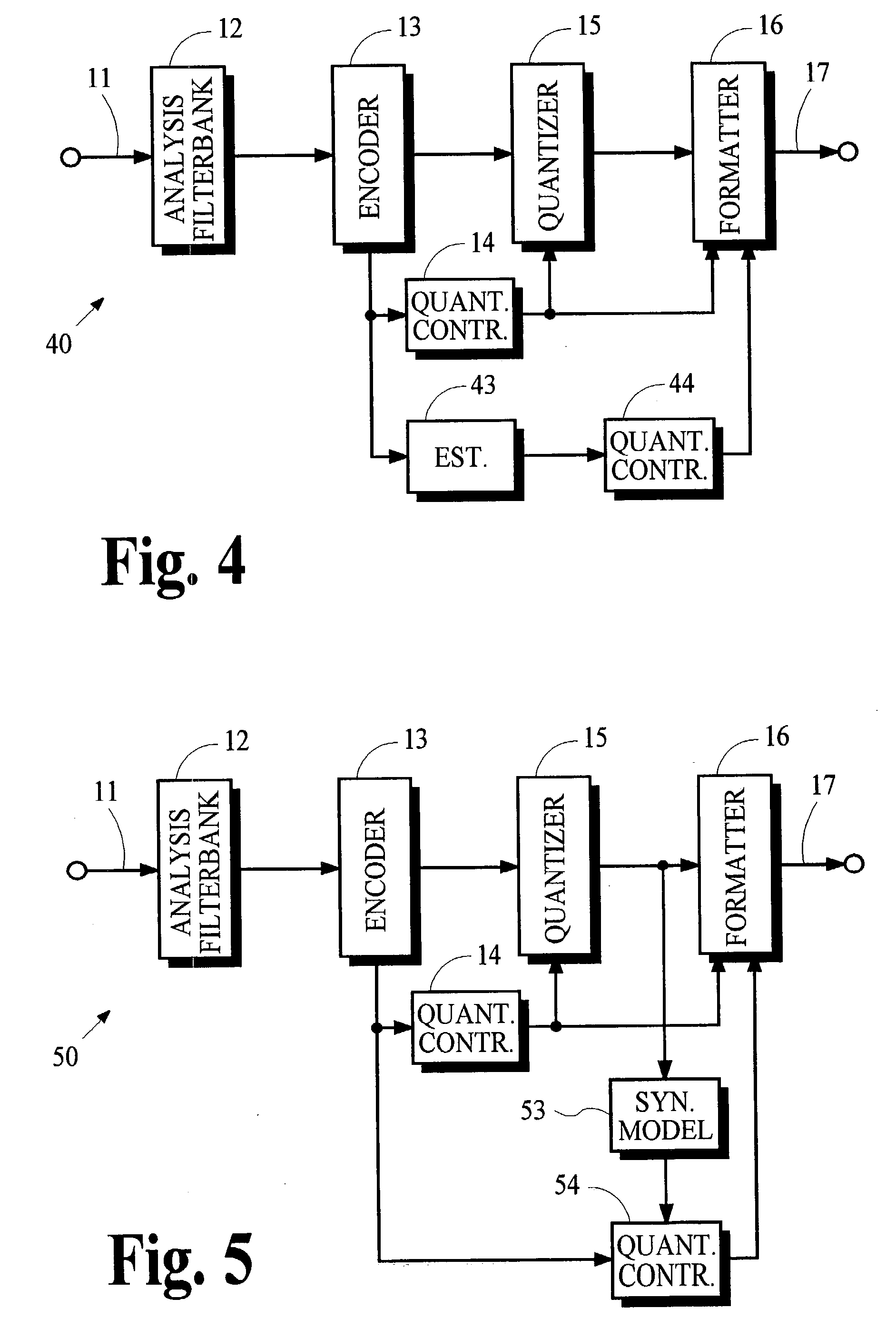Conversion of synthesized spectral components for encoding and low-complexity transcoding
a spectral component and low-complexity technology, applied in the field of coding techniques, can solve the problems of high demand for information transmission and recording capacity, inability to create any missing irrelevant information, and representations with a lower accuracy with a higher level of quantization noise, so as to improve the quality of transcoded signals and implement less expensively
- Summary
- Abstract
- Description
- Claims
- Application Information
AI Technical Summary
Benefits of technology
Problems solved by technology
Method used
Image
Examples
Embodiment Construction
A. Overview
[0021] A basic audio coding system includes an encoding transmitter, a decoding receiver, and a communication path or recording medium. The transmitter receives an input signal representing one or more channels of audio and generates an encoded signal that represents the audio. The transmitter then transmits the encoded signal to the communication path for conveyance or to the recording medium for storage. The receiver receives the encoded signal from the communication path or recording medium and generates an output signal that may be an exact or approximate replica of the original audio. If the output signal is not an exact replica, many coding systems attempt to provide a replica that is perceptually indistinguishable from the original input audio.
[0022] An inherent and obvious requirement for proper operation of any coding system is that the receiver must be able to correctly decode the encoded signal. Because of advances in coding techniques, however, situations aris...
PUM
 Login to View More
Login to View More Abstract
Description
Claims
Application Information
 Login to View More
Login to View More - R&D
- Intellectual Property
- Life Sciences
- Materials
- Tech Scout
- Unparalleled Data Quality
- Higher Quality Content
- 60% Fewer Hallucinations
Browse by: Latest US Patents, China's latest patents, Technical Efficacy Thesaurus, Application Domain, Technology Topic, Popular Technical Reports.
© 2025 PatSnap. All rights reserved.Legal|Privacy policy|Modern Slavery Act Transparency Statement|Sitemap|About US| Contact US: help@patsnap.com



